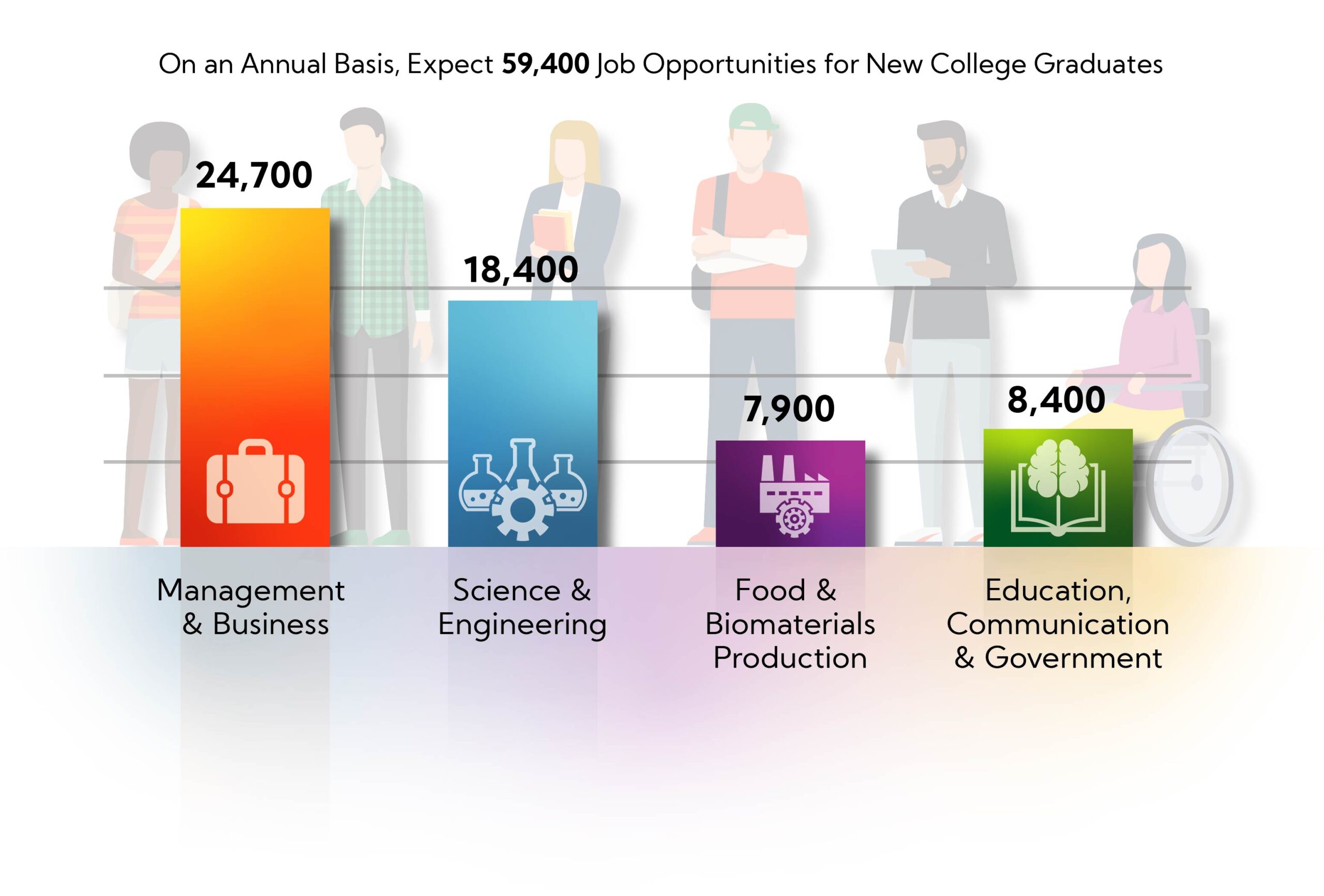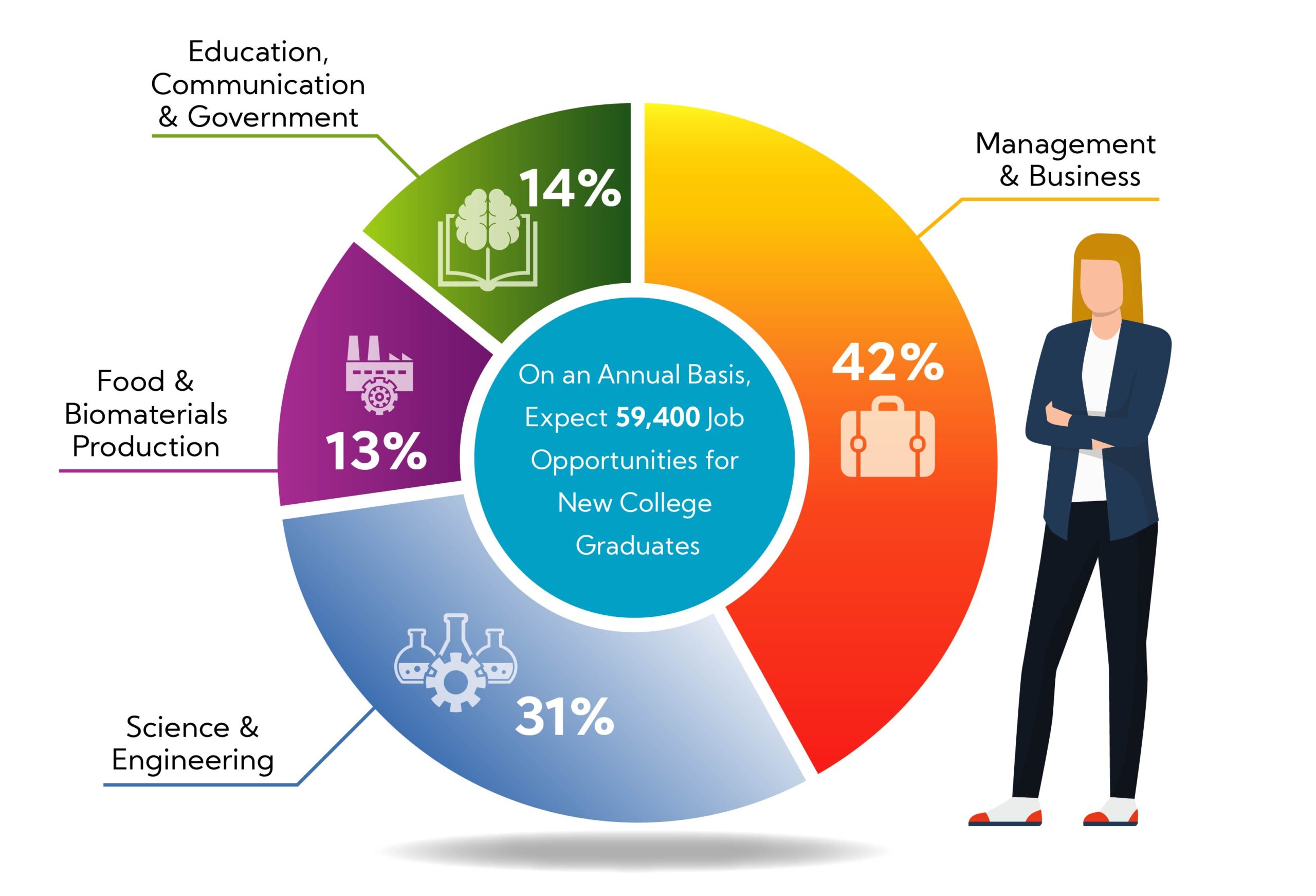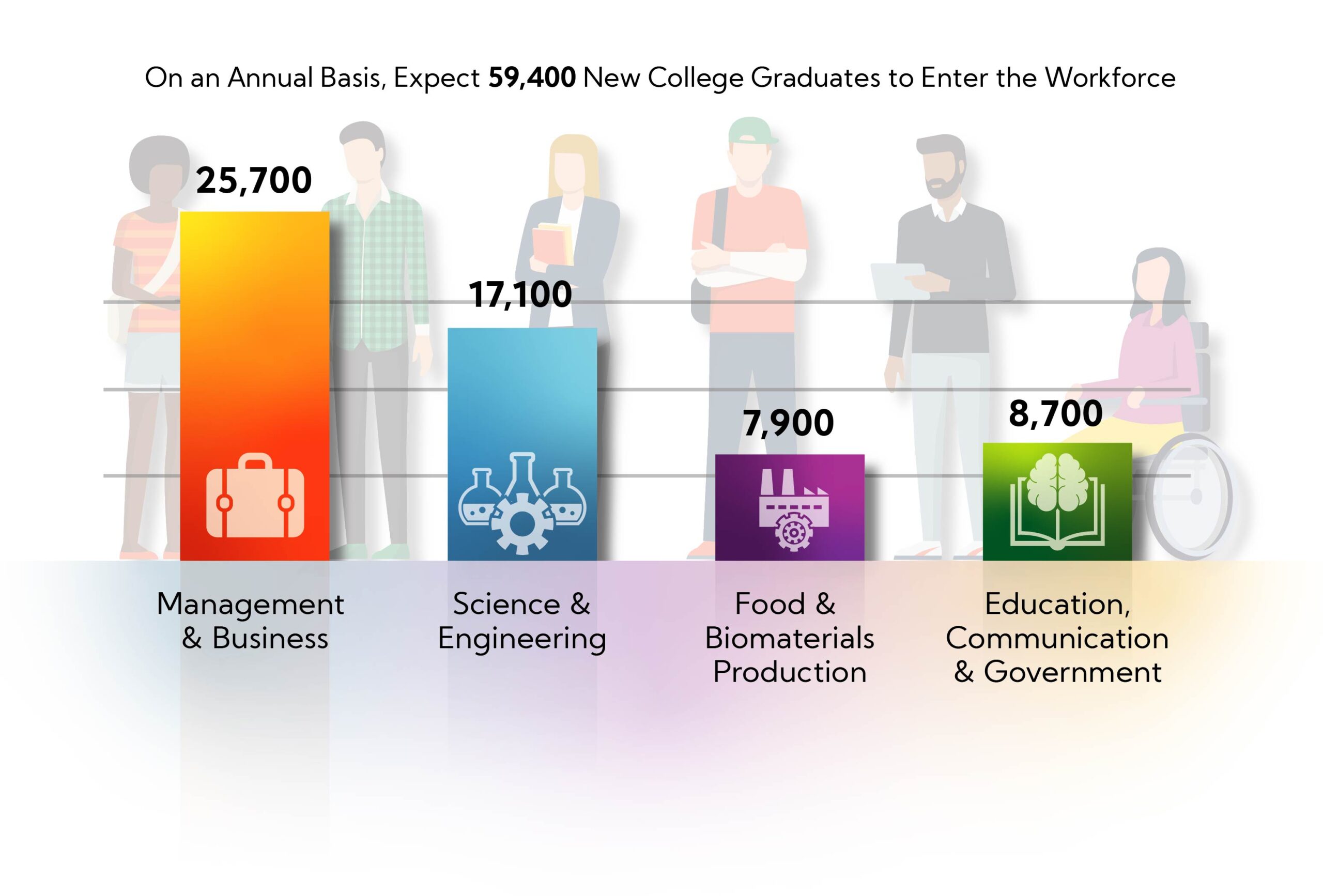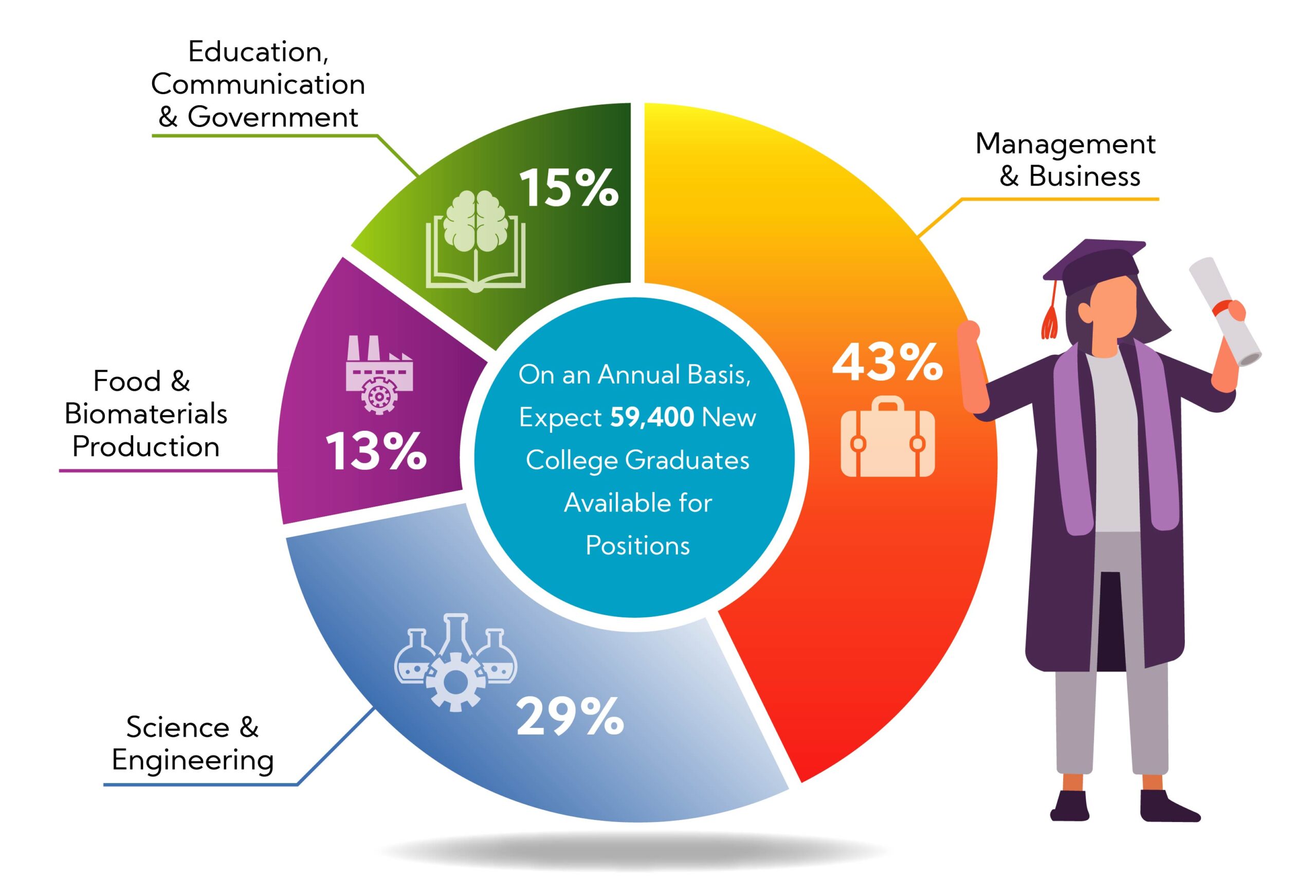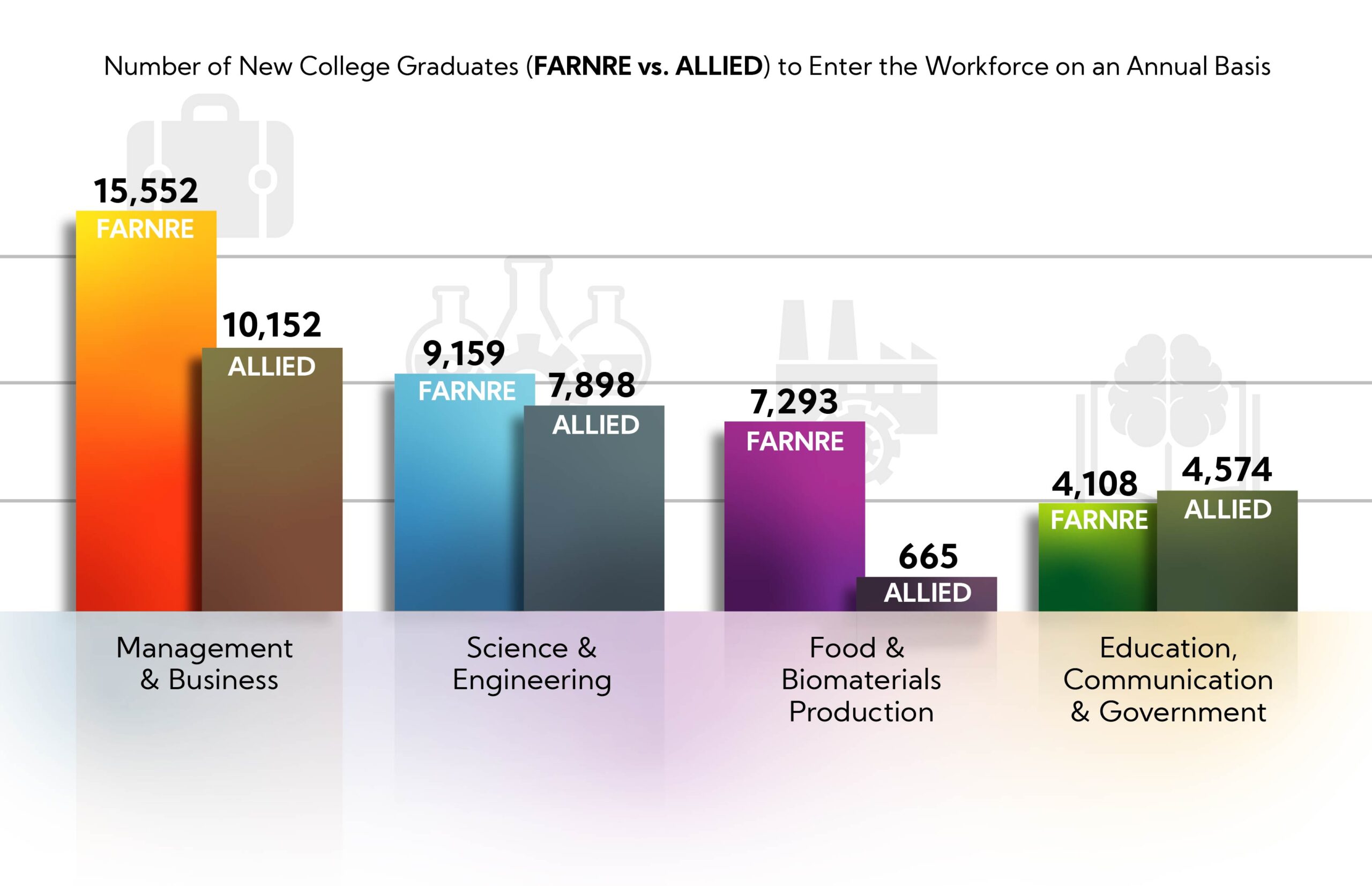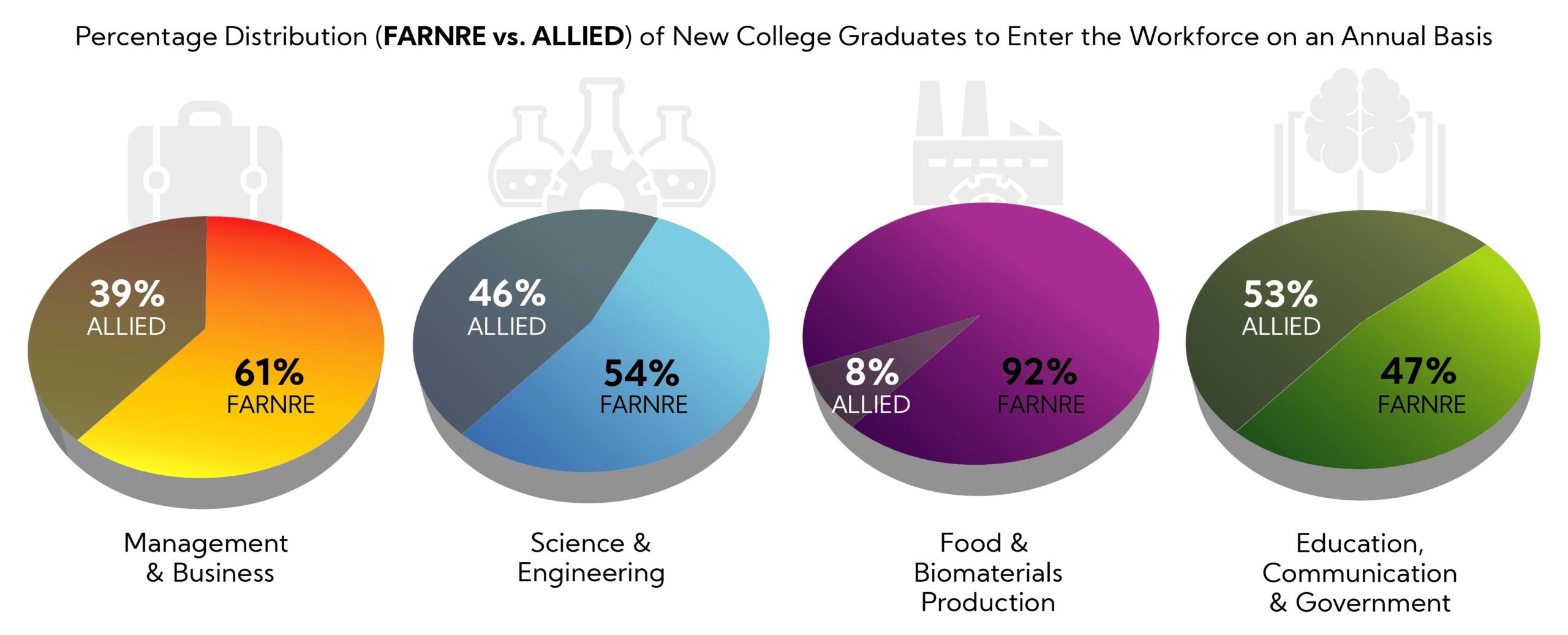
Employment Opportunities for College Graduates
in Food, Agriculture, Renewable Natural Resources and the Environment
United States, 2020-2025
Preface
A 2020 Pandemic Note: The underlying study and preparation of this report began in September 2019 when global socio-economic conditions were much different from today. While the average annual projections of employment opportunities and qualified graduates in this report are for a five-year span and developed in concert with U.S. Bureau of Labor Statistics forecasts for 2018-2028, fewer than the average annual number of employment opportunities will be realized in 2020. The project team anticipates expanding employment opportunities in 2021 and during the remainder of the period if the pandemic can be controlled. The team feels strongly that the need for graduates and available employment opportunities in the food, agriculture, renewable natural resources and the environment sector will remain steady and strong.
Opportunities
We expect that in the United States between 2020 and 2025, employment opportunities will remain strong for new college graduates with interest and expertise in food, agriculture, renewable natural resources and the environment. An average of approximately 59,400 openings annually (Fig. 1a) reflects a slight (2.6%) improvement in open positions over the past five years (Goecker et al., 2015), but at half the rate of growth predicted in the previous edition of this report (5% job growth between 2015 and 2020).
We project the major employment areas for new college graduates will be in Management and Business (approx. 24,700 positions) and in Science and Engineering (approx. 18,400 positions), making up 42% and 31%, respectively, of anticipated openings (Fig. 1b).
Employment opportunities in Food and Biomaterials Production (approx. 7,900 positions) and the Education, Communications and Government Services sectors (approx. 8,400 positions) account for 13% and 14%, respectively, of jobs available for new college graduates in food, agriculture, renewable natural resources and the environment.
Compared with the previous five-year report (Goecker et al., 2015), we project a decline in the proportion of job openings in Management and Business (42% vs. 46%), and an increase in job opportunities for college graduates with expertise in Science and Engineering (31% vs. 27%) and in the relative proportion of job openings in Education, Communication, and Government Services (14% vs. 12%).
The projections for demand of college graduates reported in this report are primarily based the U.S. Bureau of Labor Statistics (BLS). Projections of available college graduates are derived from the National Center for Education Statistics (NCES) of the U.S. Department of Education. The BLS forecasts a 5.2% increase in the U.S. labor force between 2018 and 2028 due to job growth and openings from retirement or other replacements. We expect employment opportunities in occupations related to food, agriculture, renewable natural resources and the environment to grow 2.6% between 2020 and 2025 for college graduates with bachelor’s or higher degrees.
[Figures 1a and 1b. Expect 59,400 Annual Employment Opportunities in Food, Agriculture, Renewable Natural Resources and the Environment for College Graduates]
Graduates
In the United States, between 2020 and 2025, the number of new college graduates annually seeking employment opportunities in food, agriculture, renewable natural resources and the environment will remain strong (approx. 59,400). Graduates from degree programs in food, agriculture, renewable natural resources and the environment will comprise approximately 61% (36,100) of the new graduate pool. Graduates with allied degrees – degree specializations offered by public and private non-profit higher education programs in biological sciences, engineering, health sciences, business, communication, etc. – who are expected to compete for employment with higher education graduates in food, agriculture, renewable natural resources and the environment, will comprise 39% (23,300) of the new graduate supply pool (Figs. 2a and 2c). These figures include graduates with baccalaureate and post-graduate and professional degrees.
Expect the largest pool of new college graduates to be in Management and Business (25,700 graduates per year, 43% of the total); followed by Science and Engineering (17,100 graduates per year, 29% of the total); Education, Communications and Government Services (8,700 graduates per year, 15% of the total); and Food and Biomaterials Production (7,900 graduates per year, 13% of the total) (Figs. 2a and 2b). Compared to allied majors, new graduates with degrees in food, agriculture, renewable natural resources and the environment will comprise approximately 61% of Management and Business graduates (15,600 vs. 10,100); 54% of Science and Engineering graduates (9,200 vs. 7,900); 47% of Education, Communications and Government Services graduates (4,100 vs. 4,600); and 92% of Food and Biomaterials Production graduates (7,300 vs. 600) (Figs. 2c and 2d).
[Figures 2a, 2b, 2c, and 2d. Anticipate 59,400 New College Graduates Annually Available for Positions in Food, Agriculture, Renewable Natural Resources and the Environment (FARNRE)]
Acknowledgements
This is the ninth in a series of five-year employment opportunities projections initiated by the United States Department of Agriculture (USDA).
We acknowledge the important contributions of the following individuals who served on the advisory panel of experts for the 2020-2025 study.
Advisory Panel of Experts
Cindy L. Akers, Texas Tech University
Antoine J. Alston, North Carolina A&T University
Gary A. Blair, CARET, Mississippi State University
Penelope L. Diebel, Oregon State University
Michael C. Gaul, Iowa State University
Tracy S. Hoover, The Pennsylvania State University
Terry L. Sharik, Michigan Technological University
R. Elaine Turner, University of Florida
Mary M. Willis, California State University, Fresno
We acknowledge the expertise and services from the Department of Agricultural Communication at Purdue University in the preparation and dissemination of the report, and more specifically Erin Robinson (project management), Nancy Alexander (editorial assistance), Tom Kronewitter (visual design) and Josh McDowell (visual design).
Authors
J. Marcos Fernandez, Purdue University
Allan D. Goecker, Purdue University
Ella Smith, U.S. Food and Drug Administration
Emma R. Moran, U.S. Department of Agriculture, NIFA
Christine A. Wilson, Purdue University
